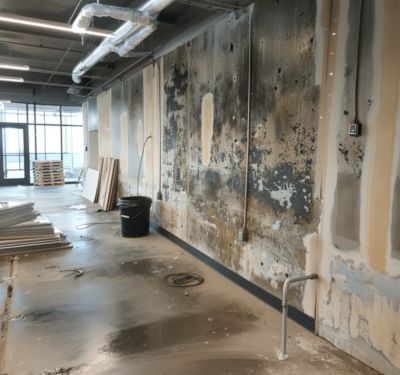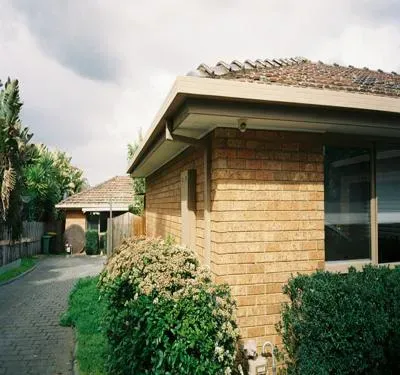How Long Does Mold Last On Surfaces?

Mold longevity on surfaces varies based on the material and environmental conditions; it can persist indefinitely in favorable conditions. Porous surfaces like wood and drywall support mold growth longer than non-porous surfaces like glass and metal. Regular cleaning and maintaining dry, well-ventilated conditions are key to preventing long-term mold presence.
Welcome to our in-depth exploration of a common yet often misunderstood household issue: mold. This blog post, “How Long Does Mold Last On Surfaces?”, delves into the fascinating and critical world of mold growth and persistence in our living spaces. Mold, a type of fungus that thrives in damp, warm environments, can be found almost everywhere – from the forest floor to our kitchen counters. Understanding how long mold can last on various surfaces is not just a matter of curiosity; it’s essential for maintaining a healthy, safe home environment.
In this article, we will uncover the secrets of mold’s resilience and persistence on different materials. Whether it’s the stubborn mold on your bathroom tiles or the unseen menace lurking in your basement, we’ll explore how various factors like surface type, humidity, and temperature contribute to mold’s lifespan. Additionally, we’ll provide practical advice on preventing mold growth and effectively dealing with it when it occurs. So, let’s dive into the microscopic world of mold and learn how to keep our homes safe and clean.
Understanding Mold
Mold is a type of fungi that’s commonly encountered in various indoor environments, posing potential health risks and property damage. Among the numerous species, Aspergillus, Cladosporium, and Stachybotrys chartarum (black mold) are notably prevalent in homes. Aspergillus frequently inhabits air conditioning systems and food, while Cladosporium settles on fabrics and wood.
Black mold, known for its distinct color and preference for damp, water-damaged materials, is infamous for producing toxins. Understanding these types is crucial for identifying and effectively addressing mold issues in domestic spaces.
The growth of mold is heavily influenced by certain environmental conditions. Moisture is the most critical factor; mold often emerges in damp or water-damaged areas. Warm temperatures further encourage mold proliferation, making them less common in colder settings. Mold feeds on organic materials like wood, paper, and carpet, thus requiring a food source. Although not always essential, many mold types favor dark or poorly lit areas.
By recognizing and controlling these conditions, such as regulating moisture levels and maintaining clean, well-ventilated spaces, the likelihood of mold growth can be significantly diminished. One way to determine if you have mold growing is to hire someone to do mold testing.
Factors Affecting Mold Longevity
In the battle against mold, understanding the factors that affect its longevity on surfaces is crucial. The type of surface is a significant determinant; mold behaves differently on porous versus non-porous materials.
On porous surfaces such as wood, drywall, and fabric, mold can penetrate deep into the material, making it more difficult to remove and allowing it to survive longer. Non-porous surfaces like glass, metal, and plastic, though not immune to mold, offer less hospitable environments for deep-rooted growth, making mold easier to clean and less likely to persist.
Environmental conditions play an equally important role in the lifespan of mold. Humidity is perhaps the most influential factor – high humidity levels provide the moisture that mold spores need to thrive. Temperature also affects mold growth, with warmer conditions typically accelerating it.
Additionally, the presence of organic material on surfaces can supply mold with the necessary nutrients to sustain itself. Understanding these factors is key to not only removing existing mold but also preventing its future growth. By controlling humidity, ensuring good ventilation, and regularly cleaning surfaces, particularly in areas prone to moisture, one can effectively limit the duration and impact of mold in their living spaces.
Average Lifespan Of Mold On Different Surfaces
The lifespan of mold varies significantly depending on the surface it inhabits. Here’s a closer look at how long mold can typically last on various common surfaces:
- Wood: Mold can embed itself in wooden surfaces, especially if they are untreated or exposed to persistent moisture. In such cases, mold can last for months or even years, gradually breaking down the wood.
- Drywall: Being porous, drywall is particularly susceptible to mold growth. Once infested, mold can live within drywall for many years if the conditions remain unchanged and if it’s not properly remediated.
- Tiles: On the non-porous surface of tiles, mold tends to last for a shorter duration, often only until it is wiped away. However, if not regularly cleaned, it can persist for weeks or months.
- Grout: Due to its porous nature, grout can harbor mold for a longer time, especially in damp environments like bathrooms. Mold can persist in grout for several months to years if not treated.
- Fabric: Mold on fabrics can last from weeks to months, depending on the material and exposure to moisture. If fabrics remain damp and are not cleaned, mold can continue to live and spread.
- Carpets: Like fabric, carpets can sustain mold growth for an extended period, especially if they are thick and absorbent. Without proper cleaning and drying, mold can survive in carpets for several months or longer.
- Metal: While mold does not feed on metal, it can live on organic material present on metal surfaces. Its lifespan on metal is generally short, lasting only until the surface is cleaned, unless there’s persistent moisture.
- Glass: Similarly, mold on glass surfaces is usually short-lived, as glass is non-porous and offers no organic material for mold to feed on. Regular cleaning can effectively keep mold at bay on glass surfaces.
Understanding the average lifespan of mold on these surfaces helps in prioritizing cleaning and maintenance efforts. Regular inspection and prompt action are key in preventing mold from becoming a long-term problem in your home.
Mold Prevention And Maintenance Tips
Preventing mold growth is far more effective than trying to eliminate it once it has taken hold. To keep your home mold-free, it’s crucial to focus on the primary cause of mold growth: moisture. Managing humidity levels in your home is essential; aim to keep indoor humidity below 60%, ideally between 30% and 50%.
This can be achieved through the use of dehumidifiers, especially in naturally damp areas like basements, and by ensuring good ventilation, particularly in kitchens and bathrooms where moisture is commonly generated.
Regular cleaning plays a pivotal role in mold prevention. Wipe down surfaces, especially in the bathroom and kitchen, where water and steam are frequent. In areas prone to mold, such as shower curtains and bathroom tiles, consider using mold-resistant products or cleaners specifically designed to inhibit mold growth. Also, promptly repair any leaks in your plumbing or roof, as water intrusion is a major contributor to mold problems.
Proper maintenance of your home extends to ensuring good air circulation. Use fans or open windows to aid in drying out potential damp spots. Be vigilant about drying any wet areas immediately—whether it’s a spill on the carpet or condensation on a window. For fabrics and upholstery, avoid letting them stay wet for prolonged periods. If they do get wet, dry them as quickly as possible to prevent mold from setting in.
By adopting these preventive measures and maintenance practices, you can significantly reduce the risk of mold growth in your home, maintaining a healthier living environment for you and your family.
The Importance Of Professional Mold Remediation Services
Professional mold remediation services play a vital role in restoring your home to a clean, fresh, and healthy environment for you and your family. experts bring a wealth of experience and specialized knowledge crucial for accurately assessing and effectively handling different types of mold, including dangerous varieties like black mold.
Their expertise is particularly important in identifying the underlying causes of mold growth and implementing strategies to prevent future occurrences. Additionally, professionals are equipped with advanced tools and techniques, such as industrial-grade dehumidifiers, air scrubbers, and HEPA vacuums, which are far more effective than typical home-cleaning methods.
The importance of professional intervention also extends to health and safety concerns. Handling mold can pose significant health risks, especially for individuals with allergies, asthma, or other respiratory conditions. Professional remediators follow stringent safety protocols to ensure both their safety and the safety of home occupants during the cleanup process.
Furthermore, professional services often come with guarantees and are essential for satisfying insurance claims related to mold damage. Opting for professional mold remediation not only ensures the thorough removal of mold but also provides homeowners with the peace of mind that their living space is safe and healthy.
Professional Mold Remediation Services Near You
In conclusion, the presence of mold in a home can be a common issue in Florida but it requires immediate attention. From our exploration of mold’s behavior on different surfaces to the various environmental factors that influence its growth, it’s clear that prevention and timely intervention are key. Whether it’s through maintaining low humidity levels, ensuring proper ventilation, or regular cleaning, we can take proactive steps to mitigate the risks associated with mold.
When faced with mold infestations, especially those involving potentially toxic varieties, the expertise of professional mold remediation services becomes invaluable. Their specialized knowledge, equipment, and techniques not only address the immediate problem but also help prevent future occurrences, safeguarding the health of our living environments.
Remember, dealing with mold is not just about immediate removal; it’s about creating and maintaining conditions that discourage its growth in the first place. By staying informed and vigilant, we can effectively manage mold in our homes, ensuring a healthier and safer environment for ourselves and our families.
As Tampa’s #1 Mold Restoration Company, Tampa Emergency Restoration Pros is well-equipped to handle the unique challenges in the Tampa area. Our team of certified professionals uses the latest technology and methods to not only remove mold but also prevent its recurrence, providing peace of mind and long-term solutions. With a focus on customer service and satisfaction, Tampa Emergency Restoration Pros is your go-to choice for reliable and effective mold remediation in the Tampa, FL area.
Frequently Asked Questions About Mold Remediation
How quickly can mold start growing on surfaces?
Mold can start growing within 24 to 48 hours under the right conditions of moisture and temperature. It’s important to address any water leaks or spills immediately to prevent mold growth.
Is mold more likely to grow on certain types of surfaces?
Yes, mold prefers porous surfaces like wood, drywall, and fabrics where it can easily penetrate and find nutrients. Non-porous surfaces like glass, metal, and plastic are less conducive to mold growth but can still support mold if organic material is present.
Can mold on a surface go away on its own without intervention?
Mold does not typically go away on its own. It requires active removal and the elimination of the conditions that allow it to thrive, such as excess moisture and organic material.

Other Blogs You May Be Interested In
Categories







